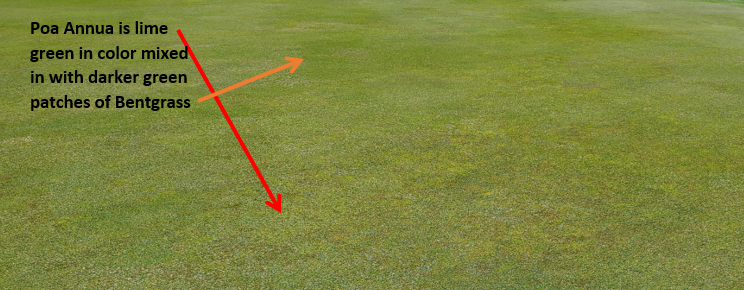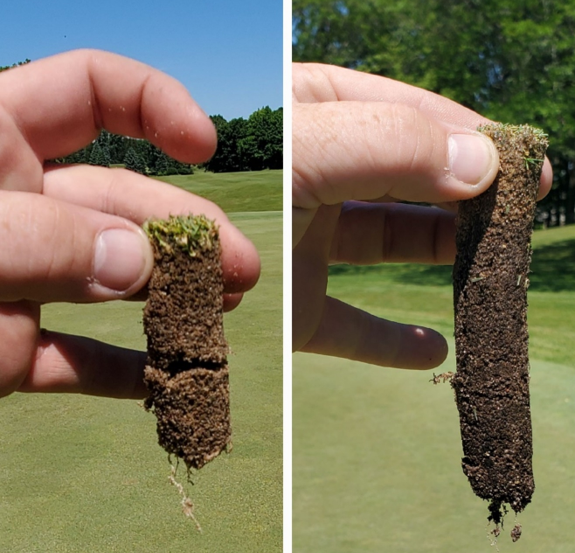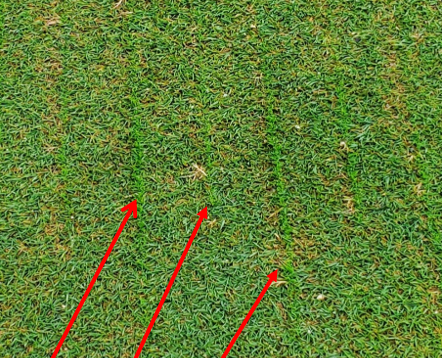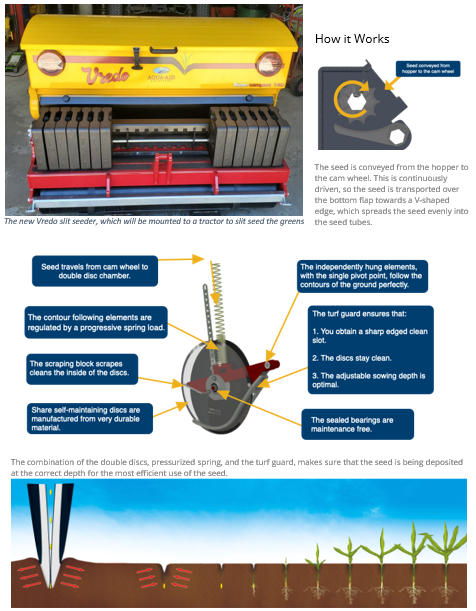We are preparing to begin interseeding our greens on August 20th and 21st to continue the transition to advanced “Super Bents” Bentgrass varieties. This maintenance practice is an important part of my yearly program as it helps addresses outdated grass types and invasive Poa Annua, allowing us to continue to enhance the playing conditions and long-term turf quality of the Greens.
A Dive into the Future of Our Greens
As we approach the interseeding work scheduled for August 20th and 21st, I want to provide an in-depth look at this process and its significance for the future of our greens here at West Bend Country Club (WBCC).
The Historical Context: Why We Are Acting
The greens at WBCC have a rich history. The front nine, established in 1929, feature Old German Creeping Bentgrass, while the back nine, from 1959, use Penncross Bentgrass. Over the decades, these greens have served us well, but like any living system, they have evolved—sometimes in ways that challenge their original integrity. Old bentgrasses tend to become leggy (stems and leaf blades grow horizontally along the surface), and their leaf blades swell during the summer heat. This leads to increased friction, making the surfaces slower and at times bumpier. These outdated genetics make it much harder to achieve the consistent, high-quality greens that modern varieties can deliver.
One of the most persistent issues we face is the infiltration of Poa Annua (annual bluegrass). This invasive species is notorious for its ability to establish itself in older greens, particularly in climates like ours in Wisconsin. What began as small patches have now grown into a significant portion of our greens, presenting several challenges that we must address to maintain the high standards of playability and aesthetics that we all expect. Poa Annua is problematic for several reasons: Poa Annua is problematic for several reasons:
- Inconsistency:
Poa Annua is not a uniform species; it consists of multiple biotypes, each with its own growth habits, color, and stress tolerance. This variability makes it difficult to maintain a consistent playing surface. - Shallow Roots:
Poa Annua has a shallow root system, which makes it more susceptible to stress during the hot summer months. To protect it, we must irrigate more frequently, which inadvertently weakens the deeper-rooted Bentgrass by encouraging shallower rooting. - Seed Production:
One of the most visible issues is the production of seed heads, especially in the spring and early summer. These seed heads not only create a bumpy surface but also contribute to an ever-growing seed bank in the soil. Even when managed, the seeds that remain viable can continue to germinate and introduce new, often less desirable, biotypes.

Introducing the “Super Bents”: A Strategic Response
To address these challenges, we are taking a proactive approach by introducing a new generation of Bentgrass varieties, commonly referred to as “Super Bents.” These varieties—MACDONALD and OO7XL—are not just incremental improvements; they represent a significant advancement in turfgrass breeding and management.
Here is why the “Super Bents” are so critical to our greens management strategy:
- Superior Density:
The shoot density of these bentgrasses is much higher than that of the older varieties. This dense growth habit is key to outcompeting Poa Annua, reducing its ability to establish itself on our greens. - Enhanced Stress Tolerance:
The “Super Bents” have been bred for improved resistance to environmental stressors such as heat, drought, and disease. This means they will maintain their quality and appearance even under challenging conditions. - Better Playability:
The fine-textured, deep-rooting turf created by these bentgrasses results in firmer, smoother, and faster greens. This not only enhances the playing experience but also contributes to the overall aesthetics of the course.
The process of transitioning our greens to these new varieties is not something that can be accomplished overnight, without killing the existing greens and taking them out of play while they grow back in. A multi month project. So instead, a continued commitment that requires careful planning, precise execution, and, most importantly, patience.

A Long-Term Commitment: What the Future Holds
The interseeding we are doing now is just the beginning of a long-term effort to transform the greens. While the results may not be immediately visible, over the next years, you will start to see the benefits of this work as the “Super Bents” begin to outcompete the Poa Annua and older Bentgrass varieties.
It is important to note that this is not a one-time project. Even as we work to establish these new varieties, ongoing interseeding will be a key part of our greens management strategy. This approach is becoming a more standard practice across the industry, even for courses built within the last 20 years. The continuous introduction of newer and better Bentgrass varieties ensures that our greens remain at the forefront of turf quality, performance, and genetic diversity within the turf stand.
In the first few years, the changes may be subtle, but by years five, I am hopeful to see a more noticeable shift in the health and consistency of our greens. This will require us to stay aggressive in our interseeding efforts, targeting the optimal times of year to give the new Bentgrass the best chance of success.

Progress Update: What We Have Seen
Even though we have been working on this process for only a couple years, we are already seeing positive results. New Bentgrass is visibly establishing itself, with clear lines emerging through patches of Poa Annua. This progress is encouraging and validates the effectiveness of our efforts. While this is a marathon rather than a sprint, the improvements so far are a promising sign of the future.
Closing Thoughts: Patience, Perseverance, and Progress
Thank you for your continued support as we undertake this essential work. Transitioning to the “Super Bents” requires patience and perseverance, but I am confident that the results will be well worth the effort.
